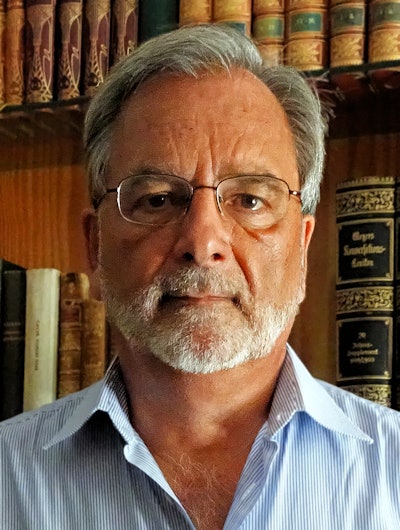
Nearly every day a new article appears in the Swedish newspapers about the biggest building and corruption scandal in recent years. At the end of July, Dagens Nyheter ran the headline: "New Karolinska Hospital (NKS) -- how could it go so wrong?" According to the newspaper, medical doctors are increasingly leaving the new university hospital and patients are suffering. Some observers now think the NKS scandal is so large that it cannot be thoroughly investigated.
So, what happened?
Radiology serves as a revealing example. In dozens of committee meetings, radiologists proposed a united radiology department, with cooperation and a location close to pathology. Then the consultants came and divided radiology into five to seven separate units, depending on what is included. These units are practicing in about 15 different locations. No cooperation with pathology exists, and apparently the consultants nearly forgot to even plan for a department of pathology.
The old hospital had a lot of expensive and fairly new equipment. Nothing was reused and moved to the new hospital. One rumor is that the old equipment colors did not match the new examination rooms. New equipment for all of radiology was tendered for, and only one company offer could be accepted. Philips Healthcare won and was guaranteed to deliver 40% of all equipment. Philips had to buy the rest from Siemens, GE, Toshiba, and others. This procurement system is, to put it politely, unconventional.
When faced with the new structure, the professor of radiology decided to step down. No new professor of radiology has been appointed. A large number of experienced and highly specialized radiologists left, and residents are expected to replace them.
The rebuilding plan
The Karolinska, the teaching hospital of the Karolinska Institute, is Sweden's best-known hospital abroad. The Nobel Assembly at the Karolinska Institute awards the Nobel Prize in Physiology or Medicine. Some 20 years ago, some administrators and politicians decided that the Karolinska Institute should get a new "world-renowned" centerpiece hospital.
 Dr. Peter Rinck, PhD, is a professor of radiology and magnetic resonance. He is the president of the Council of the Round Table Foundation and the chairman of the board of the Pro Academia Prize.
Dr. Peter Rinck, PhD, is a professor of radiology and magnetic resonance. He is the president of the Council of the Round Table Foundation and the chairman of the board of the Pro Academia Prize.The county council of Stockholm proposed a public-private partnership to finance, construct, and run the new hospital -- an approach that was developed for the profit-oriented healthcare system in the U.S. It had never been tried in Sweden but had already failed in the U.K.1
Filippa Reinfeldt promoted this idea. She was health service commissioner of Stockholm County from 2006 to 2014, being responsible for healthcare, social affairs, and hospitals. Until their divorce in 2013, Filippa was married to Fredrik Reinfeldt, who was Swedish prime minister from 2006 to 2014.
The minister of finance, Anders Borg, instructed the responsible county official to contact Filippa about dropping the whole idea, but she said this was a matter of political principle and refused. Borg then talked to her husband and asked him to change the plan. Unfortunately, his intervention was too late because the couple had just decided to split.
Although Stockholm was offered an interest-free loan from the Bank of Sweden, the project was awarded to a consortium consisting of a big Swedish construction company and a U.K. investment firm. There was no competition. The consortium needed to get the loans on the private marketplace. The entire deal was shrouded in secrecy. The agreement itself was designated as confidential, both before and after it was signed.
Built in the ungainly "modern" style of an insurance administration building of the 1960s and 1970s on the outside, and not taking into account the necessary functionality of a general hospital on the inside, it was easy to get the feeling that the planners and architects in charge were on the apprentice level. Their lack of expertise is evident. They perfectly fulfilled the general impression of incompetent architects: First, the buildings are eyesores; second, they are built without consultation of people in the know; third and worst, they don't accomplish the functions required.
Before the start of the construction phase, during the building period, and after the project was finished, neither the county council nor the companies involved chose to follow essential and professional recommendations. There was also no competitive procurement.
The building project culminated in disaster. The planners, architects, and builders of this apocalyptic hospital failed the people for whom this hospital was built: patients and those who take care of them. It was a completely mismanaged and, for the taxpayer, an extremely costly political and financial experiment. The final bill more than quadrupled to approximately 6 billion euros.
Value-based care
When the hospital was opened, a new healthcare management model was to be implemented: value-based care. The Boston Consulting Group was in charge of this megaproject. The company promised that it would revolutionize the entire healthcare system and make the Karolinska a global pioneer.
The consequence of the introduction of the new system has been described in a book about the scandal that is more than 400 pages. According to the authors Anna Gustafsson and Lisa Röstlund, the system operates at very low speed, proven routines are gone, and medical staff are leaving the already understaffed hospital.2
The two authors also reproach politicians and management for having failed to abide by the law and provide the responsibility necessary in healthcare. When moving into the New Karolinska, 350 children had been waiting for surgery for more than 90 days. Almost a year later, 800 children are queuing up. Pancreatic cancer patients will be operated on in Germany and Denmark within 14 days, but in Sweden, the limit has increased to 36 days -- a limit that Stockholm County could only manage in every third case in 2017. Several people with cancer died because New Karolinska did not have time for them, and the hospital refuses to seek help from elsewhere.
New Karolinska is one of the most expensive hospitals ever built in the world -- if not, the most expensive hospital. It suffered from the catastrophic building process and the hoax of value-based medicine, and unfortunately these failures have eroded the reputation of the Karolinska Institute. Even so, this project is an outstanding example from which to learn.
Note: You can read a more detailed version of this column for free on rinckside.org.
References
- Rinck PA. U.S. healthcare -- the price of it all. Rinckside website. http://rinckside.org/Rinckside%20Columns/2013%2009%20The%20price%20of%20it%20all.htm. October 2013. Accessed 6 August 2019.
- Gustafsson A, Röstlund L. Konsulterna: Kampen om Karolinska. Stockholm, Sweden: Mondial Publishers; 2019.
Dr. Peter Rinck, PhD, is a professor of radiology and magnetic resonance and has a doctorate in medical history. He is the president of the Council of the Round Table Foundation (TRTF) and the chairman of the board of the Pro Academia Prize.
The comments and observations expressed herein do not necessarily reflect the opinions of AuntMinnieEurope.com, nor should they be construed as an endorsement or admonishment of any particular vendor, analyst, industry consultant, or consulting group.



















